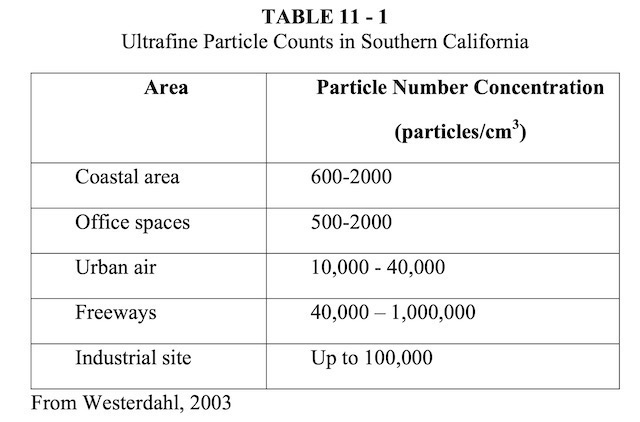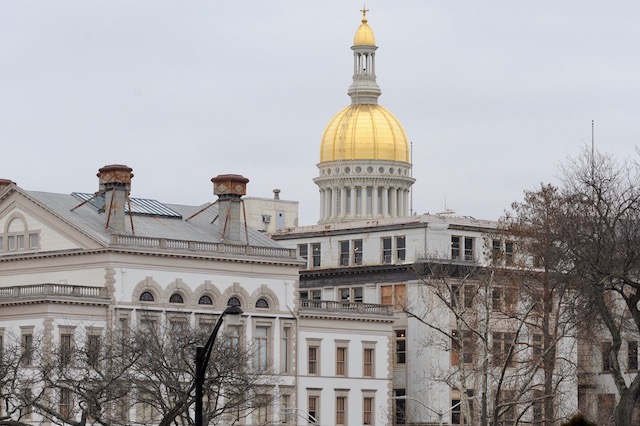Wm. Penn Foundation Funding Shaped Narrative And Content Of Reporting
Featured Voluntary Projects Are Dwarfed By DEP Planning And Regulatory Programs
In this post, I will explain the most important information that was totally ignored by the recent NJ Spotlight series on the Delaware Watershed.
As I’ve previously explained, the narrative, content and sourcing of that series was strongly shaped – almost dictated – by the Wm. Penn Foundation who funded it. It could have and should have been labelled “sponsored content”.
I also wrote about the several Statewide DEP water resource program data that NJ Spotlight failed to report, in favor of broad and vague fact free generalizations on land use and water quality by amateurs and political hacks (or self interested consultants who receive DEP and environmental group funding).
Part one today will focus on land use and water resources. In future posts I will focus in more detail on the toxic chemical and industrial pollution issues.
Some of the biggest environmental battles in New Jersey were about extension of sewer lines into rural and environmentally sensitive lands to promote sprawl development. The battles in Hopewell and Cape May County were among the highest profile and most significant.
The target of those battles was the DEP and their failure to enforce regulatory power to deny local Water Quality Management Plan (WQMPs) to map lands for sewer service and to extend sewer lines and septic systems for new development.
DEP powers under the Clean Water Act to limit the capacity of sewer plants also were targeted.
Later, environmentalists sought to limit sprawl development and protect water quality by focusing on protecting vegetated buffers around streams, lakes and rivers, particularly what are known as “headwater streams”.
Governor McGreevey, the Legislature, and the McGreevey DEP responded to these very effective environmental anti-sprawl and clean water campaigns.
The environmental community’s campaigns strongly influenced their policy and regulatory decisions, which were based on the specific planning and regulatory tools that environmental groups focused on.
Progressive local governments, like Hopewell (a Delaware River town), also adopted water resource capacity based land use Master Plans and zoning ordinances that strictly limited development and protected water resources.
The policies, regional planning, and regulatory tools they developed and implemented are powerful, but they were seriously weakened by the Christie administration and have not been restored by the Murphy DEP, despite a lot of press releases, slogans and faux environmental group cheerleading.
And all of this history and current practice was totally ignored and whitewashed by the NJ Spotlight series. All of it is Down The Memory Hole.
So, let’s go briefly in the weeds to illustrate prime examples.
The reason I do this is to provide information to the media and real environmental activists so that they can renew the kind of focused and powerful campaigns that won such huge prior victories and force the Murphy DEP to restore Christie DEP rollbacks and expand real regulatory protections.
For those that prefer to work at the local level, I highlight the Hopewell water resource based Master Plan and zoning ordinances adopted under the NJ Municipal Land Use Law (MLUL).
This knowledge can help them avoid getting co-opted and diverted by Wm. Penn Foundation grant money
Broad public awareness, knowledge of the concepts, and focus on specific regulatory tools can help advance real protections and hold government accountable . A roadmap to concrete demands.
I) The Highlands Act
The Highlands Act was based on a 2002 US Forest Service Study which found that continued reliance on local land use power under the MLUL and existing weak DEP regulations would allow excessive development that would destroy the remaining forest. That key USFS finding is reflected in the Legislative findings:
the existing land use and environmental regulation system cannot protect the water and natural resources of the New Jersey Highlands against the environmental impacts of sprawl development.
I repeat that key finding here because the myth of “local home rule” has been swallowed wholesale by media and environmental groups and virtually no one is working or focused on the “environmental regulatory system”.
The money and agenda of the Wm. Penn Foundation are distorting and even suppressing this reality.
The key land use/water resources protection tools of the Highlands Act are some of the strictest land use density limits in the country, which are based on what’s known as a “non-degradation standard” for groundwater. This density limit is established through a “septic density standard”. That standard is based on the phrase “deep aquifer recharge” (which I wrote and got inserted in the Act over the strenuous objections of both State Geologist Jeffrey Hoffman and DEP Commissioner Brad Campbell).
The Act also prohibited the extension of water and sewer lines to serve new development.
The Act also established 300 foot wide legislative buffers around all water resources.
The Act lowered the threshold for DEP issuing water allocation permits and required consideration of the ecological impacts of water withdrawals and diversions.
The Act provided regulatory power to both DEP and the Highlands Council, including in the “Planning Area”, where the Act mandates that any development shall “protect[ing] the Highlands environment from the individual and cumulative adverse impacts”
NJ Spotlight reports NONE of this.
Instead, they falsely report that “loopholes” in the Highlands Act are the source of current sprawl and water resource problems.
They confuse a “loophole” with the core political compromise that was required to pass the legislation – i.e. dividing the Highlands region into a “Preservation Area” with regulatory mandates and a “Planning Area” where some local autonomy was retained.
While misinterpreting the core issue, they fail to report that there are actual “loopholes” in the Act (there are 15 “exemptions”, none of which are for warehouses as Spotlight falsely implied.) So again, readers were misinformed and diverted from real problems.
[Full disclosure: While at DEP in 2004, I worked on drafting the introduced version of the Highlands Act, Senate Bill #1. I had no knowledge of or role in negotiating all the compromises and exemptions that watered that bill down, including carve outs from the preservation area map. Curtis Fisher – then in the Gov.’s Office and now head of the National Wildlife Federation’s New England regional office – did most of that. People would be shocked to know that NJ Conservation Foundation met with DEP Jeanne Herb to secure carve outs and map amendments for the private properties of NJCF friends and contributors. If there are any investigative reporters out there, DEP planners Rick Brown and Bill Purdie, who did the maps, can confirm that. I think Marjorie Kaplan, who now works with Jeanne Herb at Rutgers, might have been in on some of the meetings as well.]
And more importantly, they fail to report that although some local autonomy was retained in the Planning Area, that both DEP and the Highlands Council have regulatory authority to block incompatible development (like huge warehouses on agricultural lands and along rural roads in Warren County).
The Act established strong goals for the Planning Area, including:
c. The goals of the regional master plan with respect to the planning area shall be to:
(1) protect, restore, and enhance the quality and quantity of surface and ground waters therein;
(2) preserve to the maximum extent possible any environmentally sensitive lands and other lands needed for recreation and conservation purposes;
(3) protect and maintain the essential character of the Highlands environment;
[(4) – (6)]
(7) promote conservation of water resources;
[(8)]
(9) … discourage piecemeal, scattered, and inappropriate development, in order to accommodate local and regional growth and economic development in an orderly way while protecting the Highlands environment from the individual and cumulative adverse impacts thereof;
DEP water resource planning and permit regulations and the Highlands Regional Master Plan (RMP) provide regulatory power to enforce these goals. Failure to report this fact lets DEP and the Highlands Council off the hook.
Finally, NJ Spotlight failed to report that the Act created a process for Planning Area towns to conform local Master Plans and Zoning Ordinances to the strict standards in the Preservation Area:
(3) A component to provide for the maximum feasible local government and public input into the council’s operations, which shall include a framework for developing policies for the planning area in conjunction with those local government units in the planning area who choose to conform to the regional master plan;
The Highlands Council, local governments, and the Highlands Coalition have invested years of work on the local conformance process.
That effort has failed. Repeat: plan conformance has failed miserably and those responsible for those failures need to he held accountable.
That failure argues that local governments must be required to conform either via legislative amendment of the Act or via enhanced enforcement by the Highlands Council and the DEP to over-ride irresponsible local land use decisions.
If people were made aware of this failure by media and groups like the Highlands Coalition, then they could focus attention on legislative reforms and regulatory enforcement by DEP and the Highlands Council, echoing the findings in the US Forest Service Report and the Act I cited at the outset of this section.
In other words, the real and effective tools outlined above provide a roadmap on how to make concrete demands.
This post is already far too long and deep in the weeds, so we’ll end part one today here.
Future posts will focus on the following issues, again, all of which were ignored or whitewashed by the NJ Spotlight series.
(Teaser: Google the Milligan Farms and Windy Acres development battles for our next post).
II) DEP Water Quality Management Planning Powers
III) DEP Category One Stream Buffers
IV) Clean Water Act Anti-degradation Policy and NPDES Permitting
V) Hopewell Township Water Resource Capacity Based Planning and Zoning






